Upper Valley beekeepers assess winter losses
| Published: 04-03-2025 5:31 PM |
WINDSOR — Last year, beekeeper Brian Jasinski reached a new milestone in his business by surpassing 300 colonies of honeybees. He hoped hitting that mark would allow him to sell new products this spring.
But when he checked on his hives in early March, nearly 70% of his bees had died.
“It was awful to see,” said Jasinski, who owns and operates Brian’s Vermont Apiaries based in Windsor.
Jasinski has been growing his business for 10 years, reinvesting “every penny” he makes. With more than 300 colonies, a good winter survival rate would have meant he could start selling queen bees and small starter hives called nucleus colonies, in addition to the honey and bee products he already sells.
“I’m just starting to make a profit now, but it hurts when you have these losses,” Jasinski said.
It’s normal for beekeepers to lose some colonies of bees every winter, but this year farmers nationwide saw unusually high losses. The risk of honeybee loss is significant — they pollinate some $15 billion worth of crops in the United States every year, according to the U.S. Department of Agriculture.
On average, farmers lost roughly 60% of their honeybee colonies between June 2024 and February 2025, according to survey of more than 800 beekeepers administered by the nonprofit Project Apis m. In a news release, the nonprofit’s executive director called the losses “the largest every recorded in the U.S.”
For the last decade or so, beekeepers experienced average winter losses of between about 25% to 40%, depending on the size of their operation, according to the nonprofit Apiary Inspectors of America that helps to regulate the beekeeping industry.
Article continues after...
Yesterday's Most Read Articles
“Colonies need a lot of different things to be just right in order to survive the winter,” Brooke Decker, Vermont’s pollinator health expert and state apiculturist, or beekeeper, said. Bees need favorable weather, as well as more controllable factors like enough food, nutrition and limited exposure to pests and disease.
Winter preparation for beekeepers includes leaving honey in the hives for the bees to eat while they are clustered inside, providing supplementary nutrients, and surveying and treating for common pests such as varroa mites, a parasite that feeds on honeybees and often also infects bees with diseases.
Troy Hall, owner of Hall Apiaries in Plainfield, described varroa mites as “public enemy number one” for beekeepers. The parasite’s tendency to carry diseases delivers a “lethal dose” for many colonies, he said.
Scientists and experts around the country are working to determine the cause of the massive honeybee loss this year and have yet to find a clear answer, Decker said, though there are some theories.
In addition to her local roles, Decker is president of the Apiary Inspectors of America. She meets weekly with scientists, industry leaders and other stakeholders trying to find answers.
For Jasinski, the reason so many of his bees died over the winter is very clear: Varroa mites infested his colonies and spread disease to his honeybees. Decker flagged the extremely high number of mites and presence of diseases in some of his colonies late last summer.
After getting the warning, Jasinski said he treated his colonies against the mites, but it was clear from looking in the hives that the bees weren’t doing well. Some of his bees died before the winter and many more did not make it through the season.
“I did everything I could,” Jasinski said.
Nearby in Plainfield, Hall said about 50% of his colonies died compared to 35% in a typical year. The cause is not as clear.
Hall started going through his hives in late February and is still assessing the damages. One thing he knows for sure is that the bees did not die from starvation or lack of nutrients.
Hall lost 90% of his bees in 2021, so he said he has a “plan drawn up” to respond and recover this year.
“There’s not much that we can do, and in all honesty the way I look at it ... these things are happening all the time in honeybees and natural populations,” Hall said. “These ebbs and flows.”
Still, Hall, who has 750 honeybee colonies across the Upper Valley and in Vermont’s Addison County said he has had to make some changes to his business this year. He usually sells nucleus colonies, but he won’t be able to and will focus on producing honey.
Honeybees are important pollinators, especially for commercial agriculture in the United States, but they are not native to North America. Many other wild bee species and pollinators play a crucial role in supporting plants and agriculture in the Upper Valley.
The steady and cold winter weather was probably good for native bee species, of which there are about 350 in Vermont, said Spencer Hardy, a biologist at the Vermont Center for Ecostudies. But, there is no way to know for certain because this time of year most native bees have not emerged yet and because their behavior is not well understood.
The widespread honeybee losses could cause some concern for native bee populations, Hardy said, particularly if the honeybees are dying from a new bacteria or virus.
“That makes me nervous that something has shown up in the honeybees and it’s pos sible that it would spill over to wild bees,” Hardy said.
Clare Shanahan can be reached at cshanahan@vnews.com or 603-727-3216.

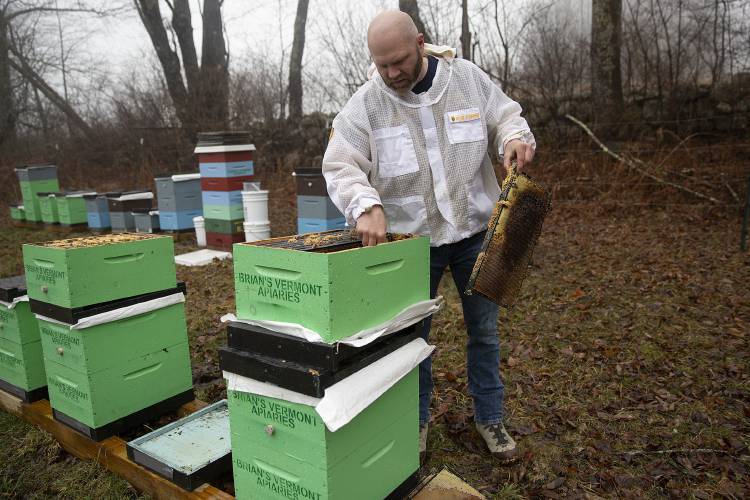
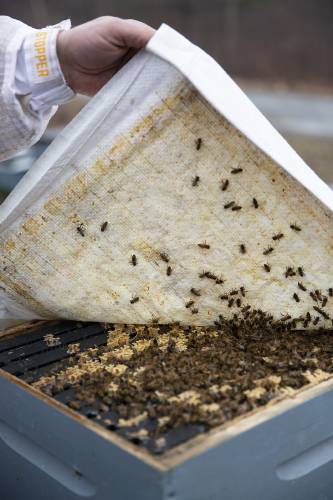
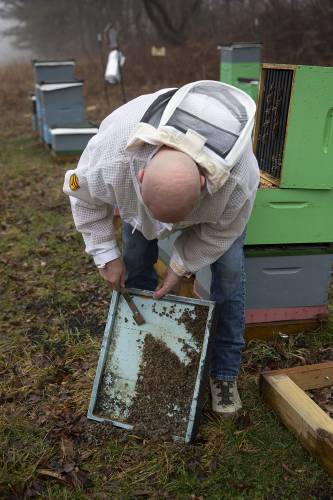
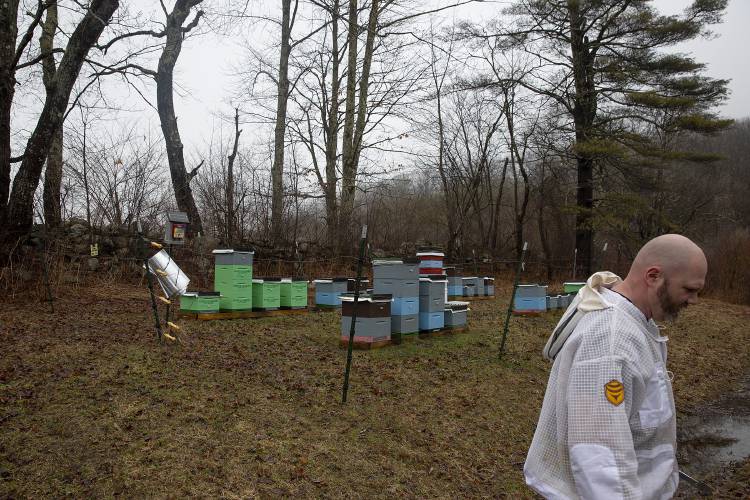
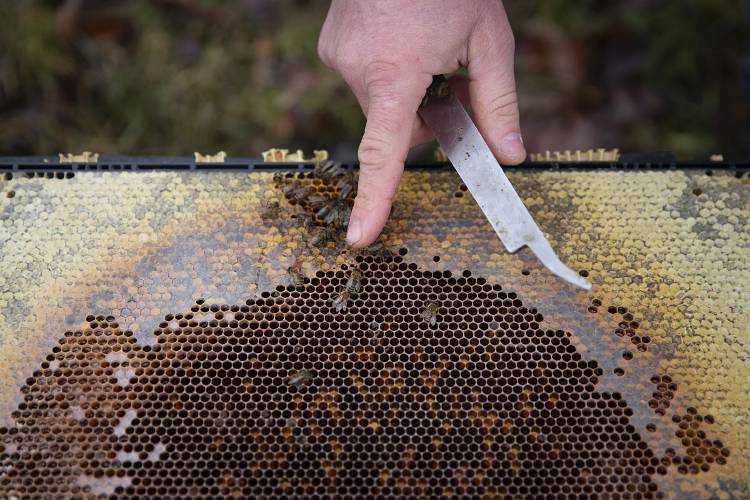





 Art Notes: ‘If you love ‘Messiah,’ you’ll love this piece’
Art Notes: ‘If you love ‘Messiah,’ you’ll love this piece’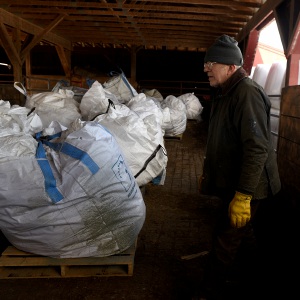 Farmer-led project gets grant to recycle agricultural plastics
Farmer-led project gets grant to recycle agricultural plastics Art Notes: We the People’s latest show offers hopeful message
Art Notes: We the People’s latest show offers hopeful message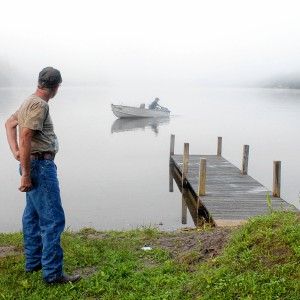 Halls Lake in Newbury earns Gold Lake Wise Award
Halls Lake in Newbury earns Gold Lake Wise Award
